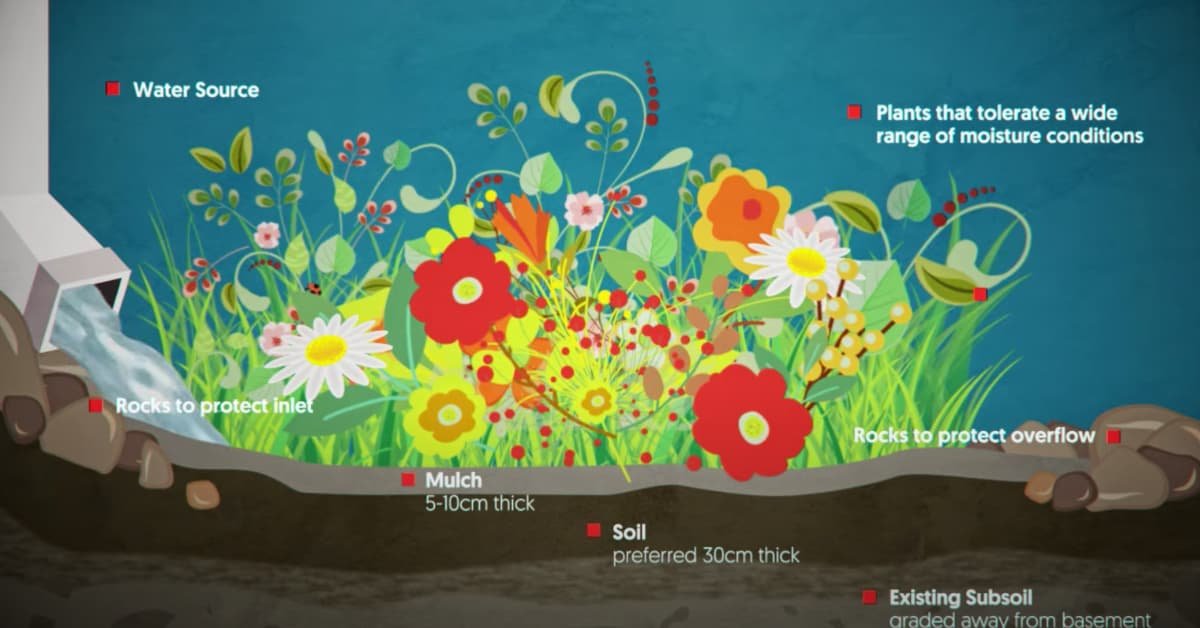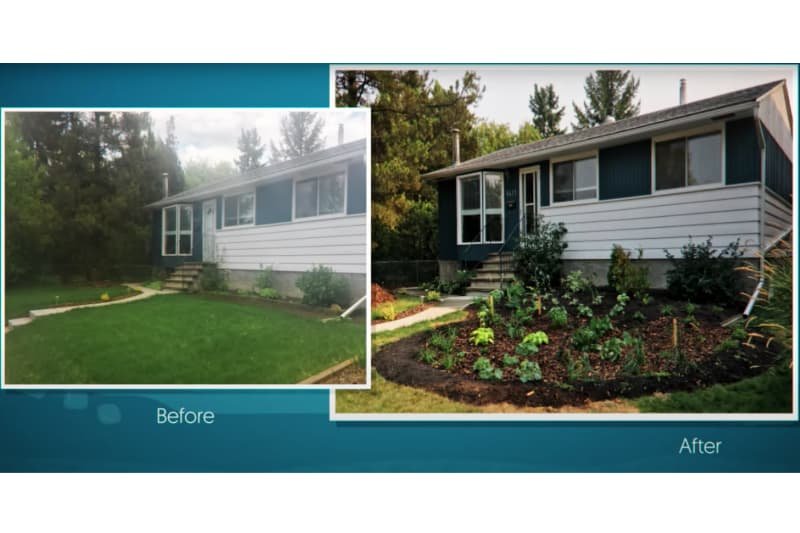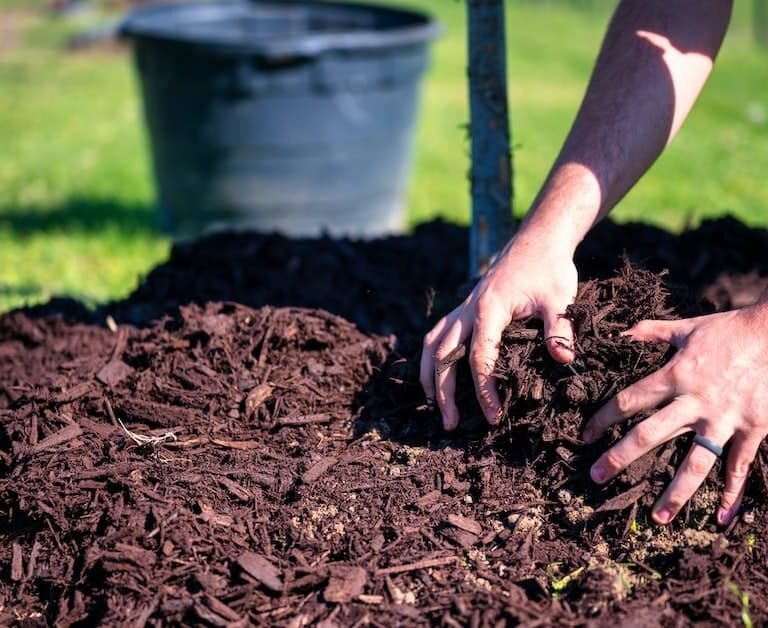
When it comes to sustainable water management, the construction of rain gardens is a great solution.
These gardens are made to collect surplus water from various surfaces, such as roofs and driveways, allowing for swift drainage into the soil.
By channeling water through a pipe or swale, it can be drained within a day, thereby preventing the breeding of mosquitoes.
The benefits of building a rain garden extend beyond redirecting water away from residential structures and alleviating strain on sewer systems.
Rain gardens also play a crucial role in minimizing waste and harmful chemicals in local rivers and lakes. Additionally, these gardens provide a haven for wildlife, offering both shelter and sustenance.
Establishing a rain garden involves careful selection of a suitable location. As well as the use of indigenous plants and grasses adapted to the specific region.
It is also imperative to create an overflow area to divert excess water away from the garden. Regular maintenance, including watering, weeding, and mulching, is essential, during the beginning year.
Overall, the construction of a rain garden is a sound approach to sustainable water management.
Short Summary
- Rain gardens are a sustainable solution for managing excess water from roofs, driveways, and other surfaces.
- They help prevent mosquito breeding and reduce strain on the sewer system by draining water quickly into the soil.
- Native wildflowers and grasses are ideal for rain gardens as they require minimal maintenance and provide shelter and food for wildlife.
- Proper planning, including selecting the right location, calculating water volume, and choosing suitable native plants, is crucial for building an effective and sustainable rain garden.
What is a Rain Garden?

A rain garden is a constructed garden bed filled with native wildflowers and grasses. It collects excess water from surfaces such as roofs and driveways, allowing it to drain into the soil and preventing mosquito breeding.
This sustainable water management solution offers many benefits. Rain gardens reduce waste and chemicals in local rivers and lakes, promoting a healthier ecosystem. Additionally, they provide shelter and food for wildlife, enhancing biodiversity.
Rain gardens are easy to install and need minimal maintenance. Regular maintenance includes removing weeds and checking for debris in the garden bed and overflow area.
It is also important to water new plants in the first year, especially during dry periods. Mulching with shredded hardwood, wood chips, or pine bark helps with drainage and weed prevention.
Rain gardens not only manage excess water but also contribute to environmental well-being.
Design and Planning
In the process of designing and planning a rain garden, careful consideration must be given to the selection of appropriate plant species and the establishment of proper water drainage pathways.
Rain garden design considerations involve choosing native plant species that are adapted to the region’s climate and soil conditions. These plants have deeper root systems, which aid in water absorption and prevent erosion.
Additionally, the design should incorporate rainwater harvesting techniques to maximize water conservation. This can include directing water from downspouts or high points into the rain garden through a plastic pipe or stone swale.
The garden should also have a slope of at least 1 inch in 4.5 feet to ensure proper drainage.
By planning and designing the rain garden, it can manage and use rainwater while providing a sustainable and aesthetically pleasing landscape.
Plant Selection and Care
By selecting and maintaining appropriate plant species, the rain garden can thrive and contribute to the ecosystem.
Native plants are best for rain gardens as they have deeper root systems and need less care.
These plants have acclimated to the local climate and soil conditions. This makes them more resilient and better adapted to the region.
They also provide a habitat and food source for local wildlife, contributing to biodiversity. Native plants develop new roots annually, improving aeration and water pathways in the soil.
This helps with the absorption and filtration of water, reducing the risk of runoff and soil erosion.
Additionally, native plants have a greater capacity to absorb pollutants, such as excess nutrients and chemicals. This minimizes their impact on local rivers and lakes.
By incorporating a variety of native plant species with different water requirements, the rain garden can support a diverse range of plants and provide a visually appealing landscape.
| Native Plant | Water Requirements | Height (inches) | Bloom Time | Sun Exposure |
|---|---|---|---|---|
| Artemisia | Average to Dry | 12-36 | Summer | Full Sun |
| Aster | Average to Moist | 12-60 | Late Summer | Full Sun |
| Coneflower | Average to Dry | 18-48 | Summer | Full Sun |
| Daylily | Average to Dry | 12-36 | Summer | Full Sun |
| Iris | Average to Moist | 12-48 | Spring | Full Sun |
FAQs:
How long does it typically take to build a rain garden?
The timeline for building a rain garden can vary depending on several factors.
The construction process typically takes several days to a few weeks, depending on the size of the garden, soil conditions, and availability of materials and labor.
Can a rain garden be installed in an urban area with limited space?
Rain gardens can indeed be installed in urban areas with limited space. Despite the constraints, rain garden maintenance is manageable, and the benefits of rain gardens in urban areas include reducing stormwater runoff, preventing flooding, and improving water quality in nearby bodies of water.
Are there any specific permits or regulations required to build a rain garden?
Permit requirements and construction regulations may vary depending on local ordinances and zoning regulations.
It is advisable to consult with local authorities or building departments to determine specific permits and regulations for building a rain garden in a particular area.
How can a rain garden be designed to attract specific types of wildlife?
Designing rain gardens for pollinator habitats involves incorporating native plant species in the garden design.
By selecting plants that attract specific types of wildlife, such as bees and butterflies, rain gardens can provide food and shelter, contributing to the biodiversity and ecological health of the area.
Can a rain garden be used to collect and reuse rainwater for household purposes?
Rain gardens can be used to collect rainwater, but it is not recommended for household purposes due to potential contamination.




